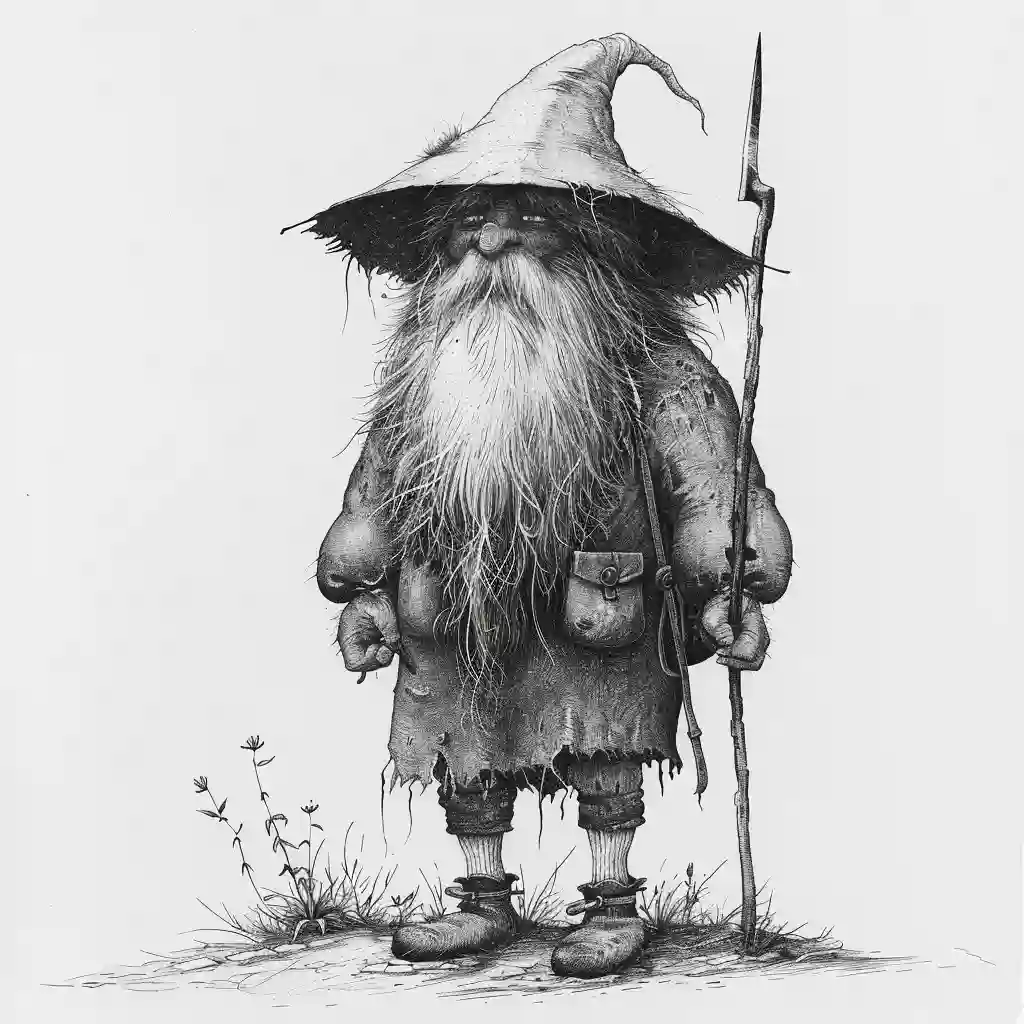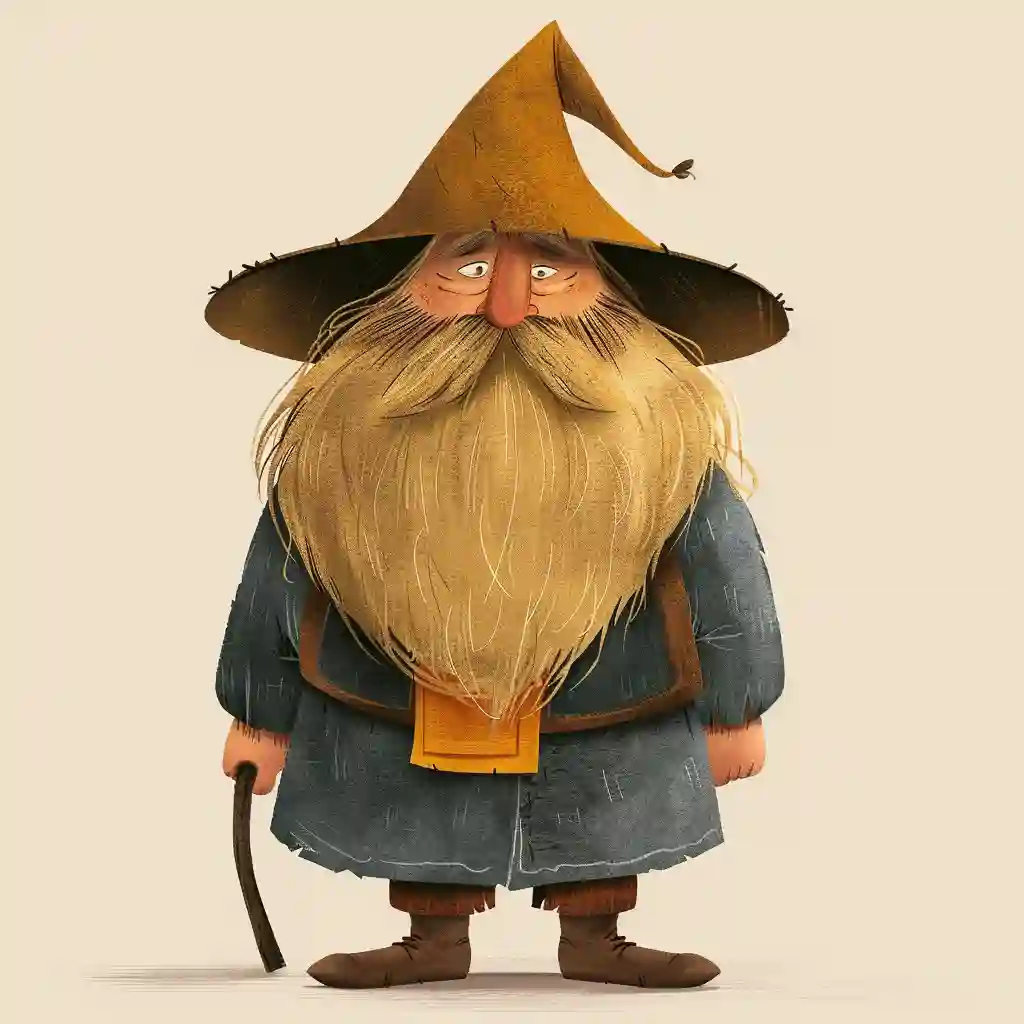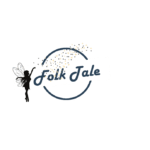NISSE/TOMTE
In Scandinavian folklore, a Nisse (also known as Tomte in Sweden, and Tomtenisse in Norway) is a mythical creature believed to bring good fortune to households, especially during the winter holiday season. The Nisse is typically depicted as a small, elderly man with a long beard, often wearing traditional Scandinavian clothing such as a conical hat and knickers.
Nisse are said to reside in barns or on farms, where they act as guardians of the property and caretakers of the animals. Farmers would leave offerings of food, typically porridge with butter, to appease the Nisse and ensure their protection and blessings.
Despite their benevolent nature, Nisse are also known for their mischievous tendencies. If displeased or neglected, they might play pranks on the inhabitants of the household or cause minor disturbances. Thus, it was important for people to maintain a good relationship with the Nisse through respectful gestures and offerings.

PHYSICAL CHARACTERISTICS
Small Stature: Nisse are typically depicted as small creatures, often no taller than a child or a few feet in height.
Elderly Appearance: Nisse are often portrayed as elderly, with wrinkled faces and long, white beards.
Traditional Clothing: They are usually depicted wearing traditional Scandinavian clothing, such as knickers, tunics, and sometimes a conical hat or a cap.
Ruddy Complexion: Nisse are often described as having rosy cheeks or a ruddy complexion,
Pointed Ears: Some depictions of Nisse include pointed ears, similar to those of elves or other mythical creatures.
Friendly Eyes: Their eyes are often portrayed as kind and friendly, reflecting their benevolent nature.
ORIGIN
The concept of household spirits or guardians is not unique to Scandinavia and can be found in various cultures worldwide. However, the specific characteristics and traditions associated with the Nisse are distinctively Scandinavian.
The origins of the Nisse can be traced back to pre-Christian times when Scandinavian societies were agrarian and deeply connected to nature. The Nisse was believed to be a guardian spirit associated with farms, households, and rural areas. These beings were thought to inhabit barns, fields, and forests, overseeing agricultural activities and ensuring the welfare of livestock and crops.
The Nisse was originally perceived as a supernatural being with powers to bless or curse, depending on how they were treated by humans. Farmers and households would leave offerings of food, typically porridge with butter, to appease the Nisse and seek their protection and blessings. Neglecting or mistreating the Nisse could lead to mischief or misfortune.
With the Christianization of Scandinavia, many pagan beliefs and traditions were integrated into Christian practices. The Nisse evolved to become associated with Christmas and the winter holiday season, similar to other folklore figures like Santa Claus or the Yule Goat. In modern times, the Nisse is often depicted as a friendly, benevolent being who brings gifts and blessings to households during the Christmas season.

POWERS AND ABILITIES
Guardianship: Nisse are considered guardians of the home and its inhabitants. They watch over the household, protect it from harm, and ensure the welfare of the family, livestock, and property.
Blessings and Good Fortune: Nisse are believed to bring blessings and good fortune to those who treat them kindly and respectfully.
Animal Communication: In some folklore, Nisse are said to possess the ability to communicate with animals.
Weather Manipulation: According to some stories, Nisse have control over the weather, particularly during the winter season.
Invisibility and Shape-shifting: Nisse are often depicted as elusive creatures who can become invisible or change their appearance at will.
Mischievous Pranks: While generally benevolent, Nisse are also known for their mischievous nature. They may play harmless pranks on humans or cause minor disturbances if they feel neglected or disrespected.
Longevity: Nisse are often portrayed as ancient beings with long lifespans.





